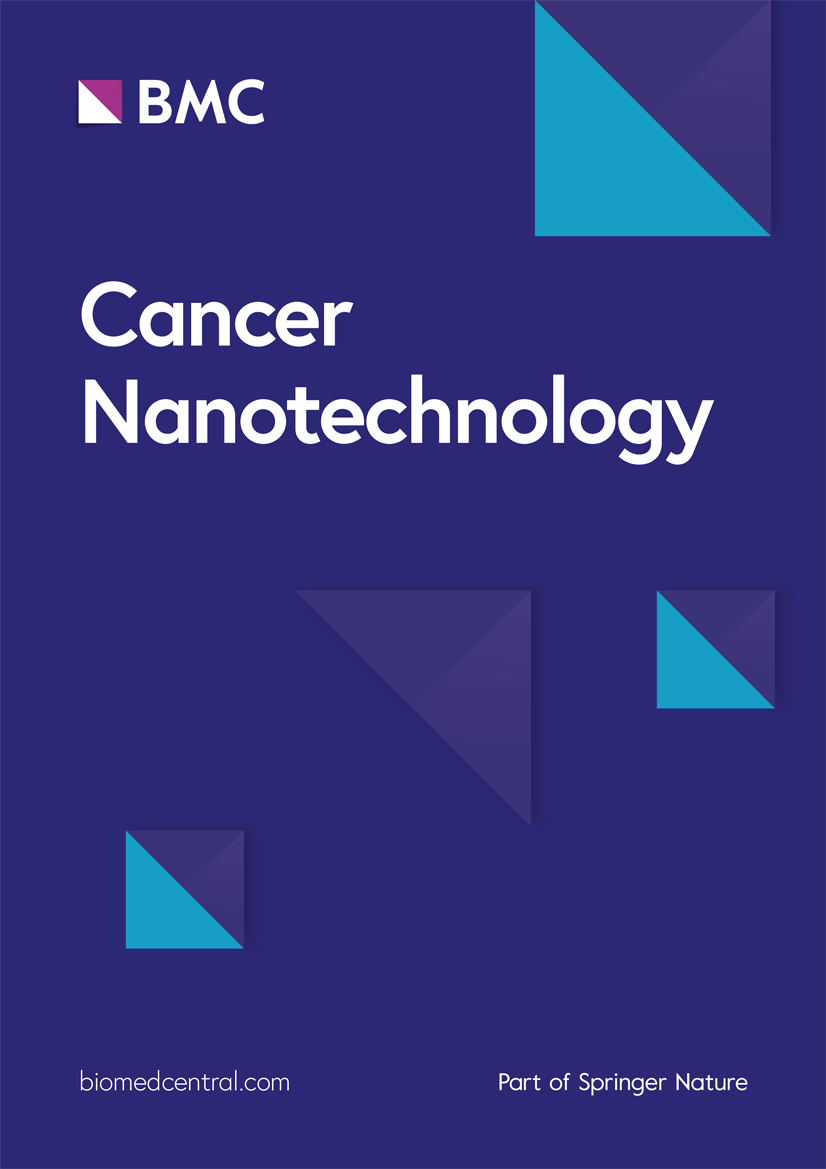Enhanced cancer immunotherapy through synergistic ferroptosis and immune checkpoint blockade using cell membrane-coated nanoparticles
IF 4.8
2区 工程技术
Q2 NANOSCIENCE & NANOTECHNOLOGY
引用次数: 0
Abstract
Abstract Background Immune checkpoint blockade (ICB) has achieved unprecedented success in inhibiting the progression and metastasis of many cancers. However, ICB regents as a single treatment have a relatively low overall response rate due to the tumor’s low immunogenicity and immunosuppressive microenvironment. Herein, we report a PD-1 cellular membrane-coated ferroptosis nanoinducer to potentiate cancer immunotherapy toward triple-negative breast cancer. Results This study demonstrates that PD-1 membrane-coated RSL3 nanoparticles (PD-1@RSL3 NPs) have the ability to disrupt the PD-1/PD-L1 axis, leading to the activation of antitumor immunity in breast cancer. In addition, the nanoparticles promote the induction of tumor cell ferroptosis through GPX4 inhibition, enhanced infiltration of CD8 + T cells, and maturation of dendritic cells. The potentiated antitumor immune response induced by PD-1@RSL3 NPs significantly delayed tumor progression and extended the survival rate of mice with breast cancer xenografts. Conclusions Our study suggest the potential of PD-1@RSL3 NPs as an effective therapeutic approach for breast cancer by promoting tumor cell ferroptosis and inducing antitumor immunity.利用细胞膜包被纳米颗粒通过协同铁凋亡和免疫检查点阻断增强癌症免疫治疗
免疫检查点阻断(ICB)在抑制多种癌症的进展和转移方面取得了前所未有的成功。然而,由于肿瘤的低免疫原性和免疫抑制微环境,ICB试剂作为单一治疗的总有效率相对较低。在此,我们报道了一种PD-1细胞膜包被的铁下垂纳米诱导剂,以增强对三阴性乳腺癌的癌症免疫治疗。结果本研究表明,PD-1膜包被的RSL3纳米颗粒(PD-1@RSL3 NPs)具有破坏PD-1/PD-L1轴的能力,从而激活乳腺癌的抗肿瘤免疫。此外,纳米颗粒通过抑制GPX4、增强CD8 + T细胞的浸润和树突状细胞的成熟来促进肿瘤细胞铁下垂。PD-1@RSL3 NPs诱导的增强抗肿瘤免疫反应显著延缓了肿瘤进展,延长了乳腺癌异种移植小鼠的存活率。结论PD-1@RSL3 NPs可能通过促进肿瘤细胞铁下垂和诱导抗肿瘤免疫而成为治疗乳腺癌的有效途径。
本文章由计算机程序翻译,如有差异,请以英文原文为准。
求助全文
约1分钟内获得全文
求助全文
来源期刊

Cancer Nanotechnology
Pharmacology, Toxicology and Pharmaceutics-Pharmaceutical Science
CiteScore
5.20
自引率
1.80%
发文量
37
审稿时长
15 weeks
期刊介绍:
Aim:
Recognizing cancer as a group of diseases caused by nanostructural problems (i.e. with DNA) and also that there are unique benefits to approaches inherently involving nanoscale structures and processes to treat the disease, the journal Cancer Nanotechnology aims to disseminate cutting edge research; to promote emerging trends in the use of nanostructures and the induction of nanoscale processes for the prevention, diagnosis, treatment of cancer; and to cover related ancillary areas.
Scope:
Articles describing original research in the use of nanostructures and the induction of nanoscale processes for the prevention, diagnosis and treatment of cancer (open submission process). Review, editorial and tutorial articles picking up on subthemes of emerging importance where nanostructures and the induction of nanoscale processes are used for the prevention, diagnosis and treatment of cancer.
 求助内容:
求助内容: 应助结果提醒方式:
应助结果提醒方式:


